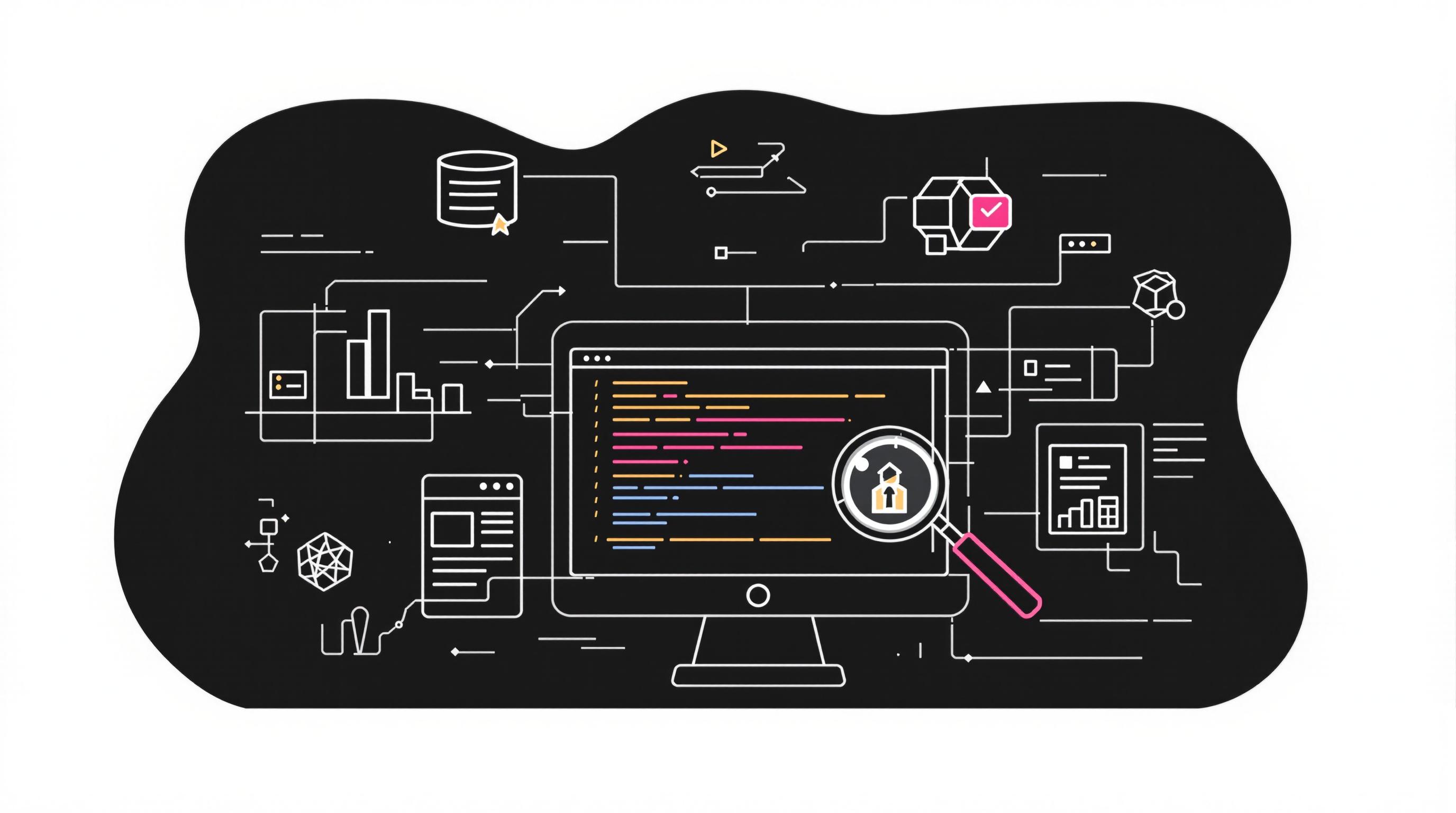Manual data categorization is slow, inconsistent, and prone to errors. Machine learning solves this by automating the process, ensuring speed, accuracy, and consistency across large datasets.
Key Benefits of Automated Categorization:
- Faster processing: Handles large datasets quickly.
- Consistent results: Reduces human error and ensures uniform classification.
- Flexible data handling: Works with diverse formats like text, images, and numbers.
How It Works:
- Data Preparation: Clean and preprocess data to remove duplicates, handle missing values, and standardize formats.
- Feature Engineering: Extract meaningful patterns from raw data (e.g., tokenizing text or scaling numbers).
- Model Selection: Choose algorithms like SVM, Decision Trees, or Neural Networks based on your data and goals.
- Training & Validation: Split data into training, validation, and testing subsets to fine-tune performance.
- Integration: Use APIs for real-time categorization or batch processing.
Quick Comparison: Manual vs. Automated Categorization
| Aspect | Manual Categorization | Automated Categorization |
|---|---|---|
| Speed | Slow and labor-intensive | Fast and efficient |
| Consistency | Varies between workers | Uniform and reliable |
| Error Rate | High risk of mistakes | Low, depending on training |
Tip: Regularly update your model to adapt to new data patterns and maintain accuracy. The article dives deeper into implementation steps, tools, and best practices.
Automated Data Classification - continuous learning AI
Preparing Data for Machine Learning Models
Data Cleaning and Preprocessing
Once you've chosen a model, the next step is preparing your data. This involves identifying and fixing issues like duplicates, missing values, and inconsistent formats. Tools like pandas can help with tasks such as normalizing data and addressing gaps in your dataset. Automated validation checks can streamline this process, ensuring your data is ready for training.
Key Data Cleaning Steps:
| Step | Purpose | Common Tools |
|---|---|---|
| Duplicate Removal | Avoid bias in the model | pandas.drop_duplicates() |
| Missing Value Handling | Fill in gaps for completeness | scikit-learn.Imputer |
| Format Standardization | Ensure uniform structure | pandas.normalize() |
| Noise Reduction | Eliminate irrelevant variations | Regular expressions |
Clean data is essential for building reliable training datasets.
Building Quality Training Datasets
A good training dataset requires balanced categories and accurate labels. Use techniques like stratified sampling to ensure your data reflects real-world distributions. Collaborate with domain experts to validate labels and improve the dataset's accuracy.
Key points to focus on:
- Balance classes using oversampling or undersampling methods.
- Validate labels with input from subject matter experts.
- Keep the dataset aligned with real-world conditions.
Feature Engineering for Categorization
Once your data is clean and structured, the next step is refining it into features your model can use. Feature engineering transforms raw data into inputs that improve model performance. For text data, this might involve tokenization or creating TF-IDF vectors. For numerical data, scaling and normalization are common practices.
Popular Feature Engineering Techniques:
- Text Processing: Standardize text with tokenization, stemming, and lemmatization.
- Feature Extraction: Convert text into numerical data using TF-IDF or word embeddings.
- Feature Selection: Use methods like mutual information or recursive feature elimination to focus on the most relevant attributes.
Pay attention to domain-specific terms - they can make a big difference in categorization accuracy. Thoughtfully engineered features also make it easier to integrate your model into APIs by ensuring consistent input formats.
Selecting Machine Learning Algorithms
Supervised vs. Unsupervised Learning
Supervised learning works well when your data is labeled and organized into predefined categories. On the other hand, unsupervised learning identifies patterns in data without labels, though it often requires additional steps to categorize the results. For instance, if you're sorting support tickets into departments based on pre-labeled data, supervised learning would be the way to go.
Common Algorithms for Categorization
After completing feature engineering (as discussed in Section 2), the following algorithms are often used for categorization tasks. Here's a quick comparison:
| Algorithm | Best Use Case | Performance Characteristics | Resource Requirements |
|---|---|---|---|
| Decision Trees | Simple tasks with clear rules | Quick to train, easy to interpret | Low computational needs |
| Random Forest | Datasets with noise or complexity | More accurate than single trees | Moderate resources |
| SVM | High-dimensional or text-based data | Performs well on smaller datasets | Moderate to high memory |
| Neural Networks | Large, complex datasets | Can achieve very high accuracy | High GPU requirements |
When choosing an algorithm, consider factors like the complexity of the problem, the resources you have, and how accurate the results need to be. For text categorization, Support Vector Machines (SVM) often stand out. They deliver strong accuracy for smaller datasets and require less training data compared to deep learning models.
Measuring Algorithm Performance
Evaluating how well your algorithm performs is critical to ensuring it meets your goals. The following metrics are commonly used:
| Metric | What It Measures | When to Prioritize |
|---|---|---|
| Accuracy | Overall percentage of correct results | Use with balanced datasets |
| Precision | How often positive predictions are correct | When false positives are costly |
| Recall | How well all relevant cases are identified | When false negatives are critical |
| F1 Score | Combines precision and recall | When you need balanced performance |
Choose metrics that align with your objectives. For example, in financial fraud detection, precision is key to avoid false alarms. In contrast, for medical diagnoses, recall takes priority to ensure no critical cases are missed. These metrics, combined with earlier data preparation steps, can guide you in selecting the best tools for your categorization system.
sbb-itb-f2fbbd7
Implementing Automated Data Categorization
Training and Validating the Model
Split your dataset into three parts: 70% for training, 15% for validation, and 15% for testing. Use metrics like accuracy and F1 score (from Section 3) during validation to ensure the model aligns with your categorization goals.
| Technique | Purpose | Impact |
|---|---|---|
| Cross-validation | Checks model performance on different data splits | Minimizes evaluation bias |
| Early stopping | Monitors validation loss to prevent overtraining | Helps the model generalize better |
| Regularization | Adds penalties to avoid overly complex patterns | Lowers the risk of overfitting |
Tools and Frameworks for Use
| Framework | Best For | Key Feature |
|---|---|---|
| TensorFlow | Deep learning and large datasets | Access to pre-trained models via TF Hub |
| Scikit-learn | Traditional machine learning tasks | Combines preprocessing and training in pipelines |
These tools work seamlessly with the preprocessing techniques from Section 2, ensuring your data stays consistently formatted from cleaning to categorization.
Testing and Refining the Model
Keep an eye on metrics like accuracy and F1 score over time. Set up alerts to notify you if accuracy drops by more than 5% from the baseline - this helps maintain the model's reliability.
| Focus Area | Action | Outcome |
|---|---|---|
| Features | Remove unnecessary ones | Gains in efficiency |
| Parameters | Systematically tweak settings | Improved accuracy |
| Errors | Examine errors in context | More precise fixes |
Integrating ML-Based Categorization into Workflows
Using APIs for Automation
Many modern machine learning platforms offer APIs designed for automating data annotation and labeling. These APIs can integrate smoothly with existing data management systems, allowing real-time categorization without disrupting current workflows. This builds on the preprocessing methods discussed in Feature Engineering (Section 2.3).
To make API integration effective, focus on proper configuration and data mapping. Ensure your API endpoints can handle both batch processing for large datasets and real-time categorization for individual items. This approach balances efficiency with system performance.
| Integration Type | Best Use Case |
|---|---|
| REST API | Handling single records |
| Batch API | Processing large datasets |
| Streaming API | Managing real-time data flows |
Managing Exceptions and Edge Cases
Handling exceptions and edge cases is crucial for maintaining system reliability. A tiered approach works best:
- Low-confidence predictions: Automatically flagged for review.
- Data anomalies: Trigger validation protocols (refer to Section 2.1).
- True edge cases: Escalated to human oversight for manual intervention.
| Exception Level | Handling Method | Required Action |
|---|---|---|
| Low Confidence | Automated flagging | ML team review |
| Data Anomalies | Validation checks | Data cleaning |
| Edge Cases | Human oversight | Manual categorization |
Updating and Maintaining the Model
Regular updates are essential to keep your machine learning model accurate over time. A structured monitoring and update schedule can help:
| Aspect | Frequency | Key Metrics |
|---|---|---|
| Performance Check | Weekly | Accuracy, F1 Score |
| Data Quality Audit | Monthly | Error rates, coverage |
| Full Retraining | Quarterly | Model drift, precision |
Set up automated alerts for any performance drops. These updates align with the performance evaluation framework outlined in Section 3.3, ensuring your model remains reliable and effective.
Conclusion and Key Points
Recap of Advantages
Automated categorization, when integrated into workflows (see Section 5), offers these key benefits:
- Cuts manual labeling time by 60-80% (refer to Section 1.3).
- Delivers consistent accuracy across various datasets (based on Section 3.3 metrics).
- Easily scales through API integration (covered in Section 5.1).
Even with a tenfold increase in data volume, machine learning models maintain speed and accuracy (see Section 4.3).
Implementation Steps
Kick things off with pilot projects, using the validation split method outlined in Section 4.1. Apply the validation frameworks discussed in Section 3.3 to measure early success.
| Implementation Phase | Focus Areas | Metrics to Track |
|---|---|---|
| Initial Setup | Data prep, Model selection | Accuracy scores |
| Validation | Dataset quality, Feature tuning | Precision, Recall |
| Scaling Up | API integration, Workflow automation | Speed, System performance |
Suggested Tools and Resources
Sections 4.2 and 5.1 highlight tools like InstantAPI.ai, which streamline model training, validation, and integration. Choose tools that fit seamlessly into your current tech stack (see API types in Section 5.1) and offer features for monitoring model performance (refer to Section 5.3).
Consistent performance checks, as discussed in Section 5.3, are crucial for ensuring models keep up with changing data patterns.


